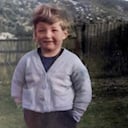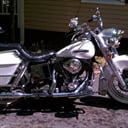What is the structure shown in the photo?
The church got its name from the Franciscan friars, who wore a grey habit, who had a monastery on the site from the 13th Century. A new church was built at Greyfriars in the early 14th Century, partly funded by the Queen Margaret, second wife of Edward I. It was the second-largest in London. One of the Franciscan monastery’s benefactors was Lord Mayor Richard Whittington, who founded the church’s library in 1429.
Along with a large swathe of the City, Christ Church was destroyed in the Great Fire of 1666. The huge Gothic church was almost totally destroyed. A new church, designed by Christopher Wren, was completed in 1687. It was considerably smaller than its medieval predecessor.
Christ Church was one of eight Wren churches that burned on one of the most ferocious nights of the Blitz, 29th December 1940. Only one item is known to have been saved – an ornate wooden font cover which was rescued by an unknown person as the church burned.
The firebombing left the building a blackened, empty shell – but the walls and tower were still standing. In order to restore its structural integrity, the tower was carefully rebuilt and the whole ruin was designated a Grade I listed building in 1950. A garden was laid out in the ruined nave of the church, with wooden frames for climbing roses installed where columns had once stood. The 18th Century vestry house has been rebuilt.The tower was eventually converted into a private residence – surely one of London’s most unusual homes.
More Info:
flickeringlamps.com








